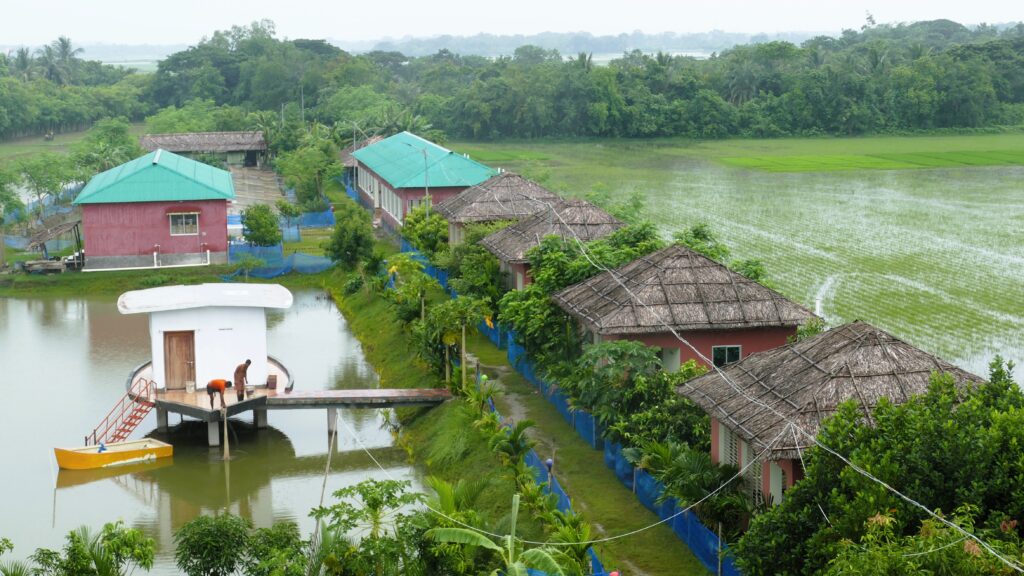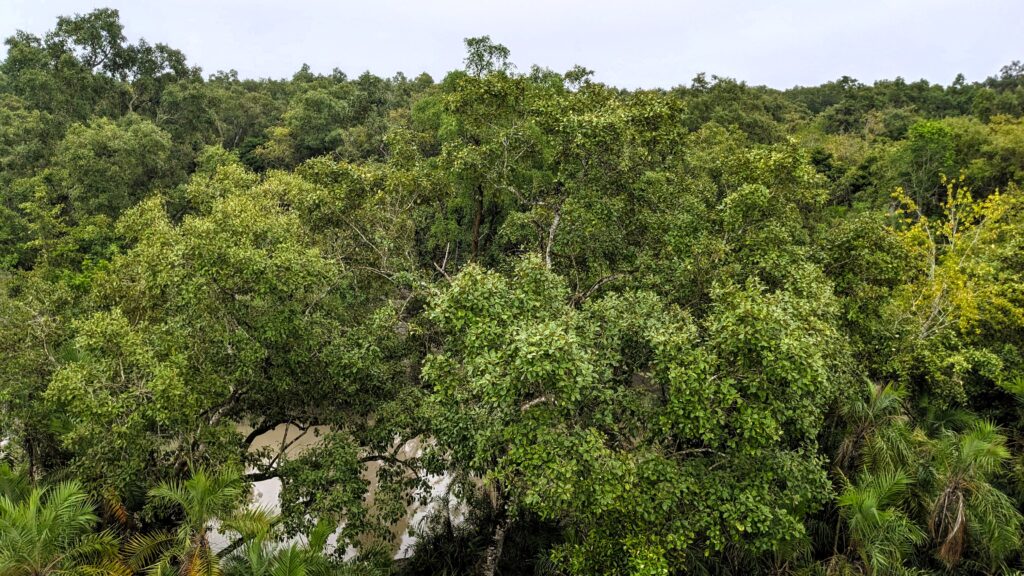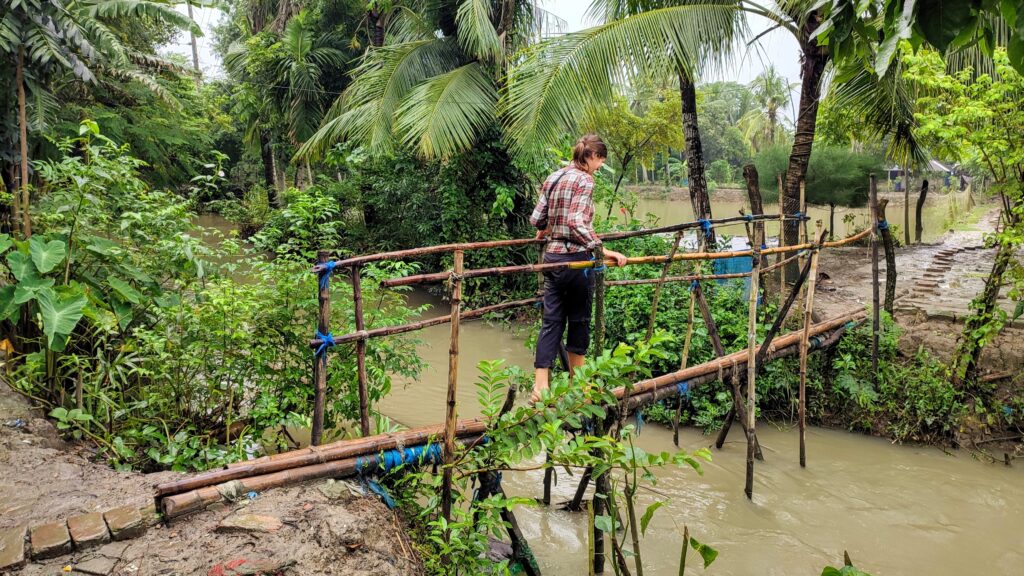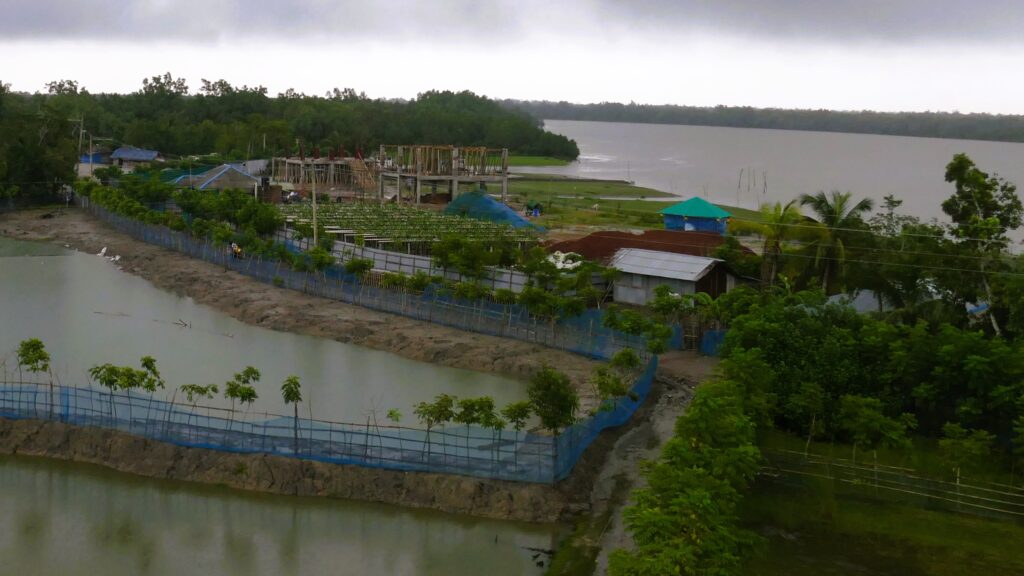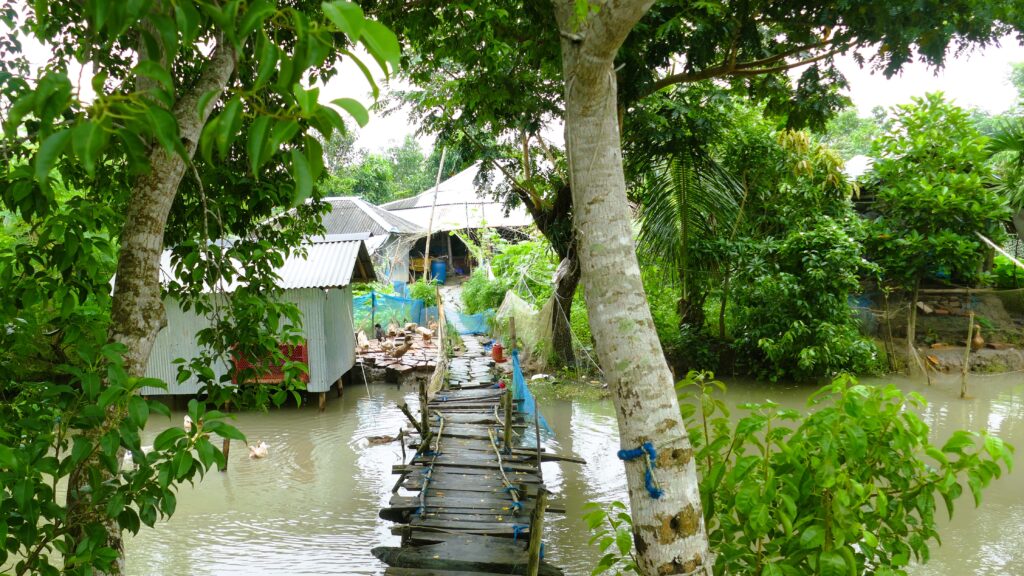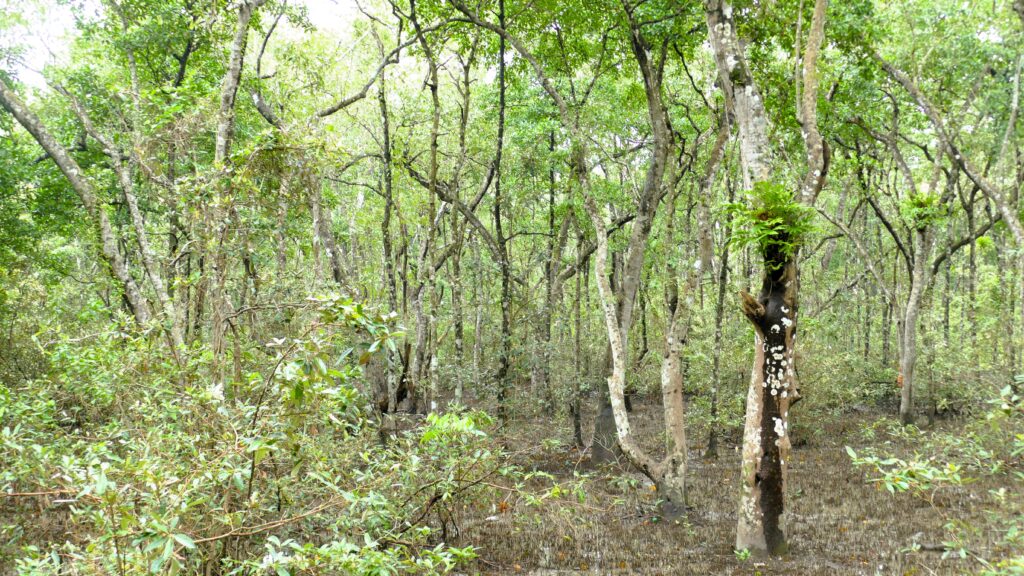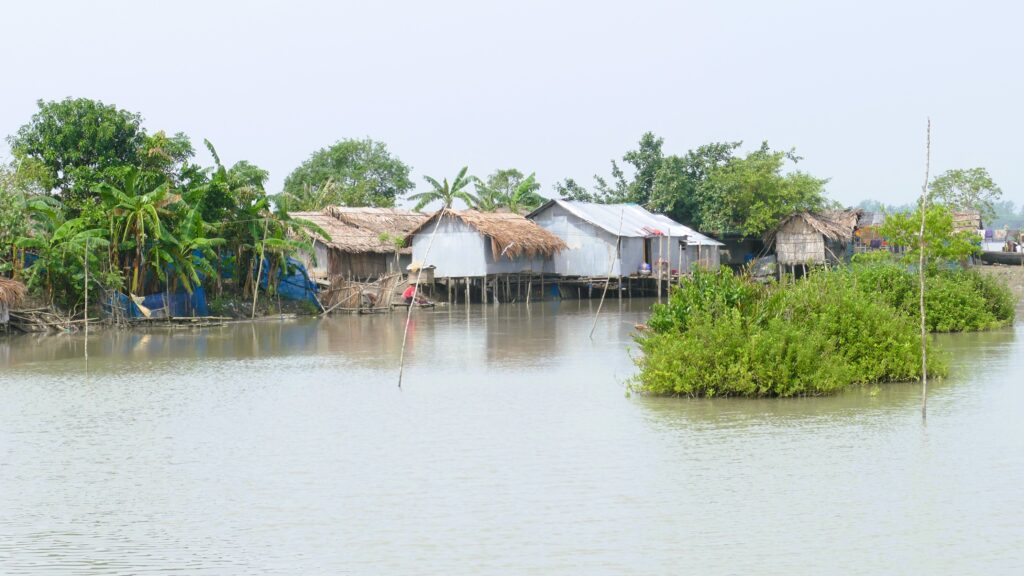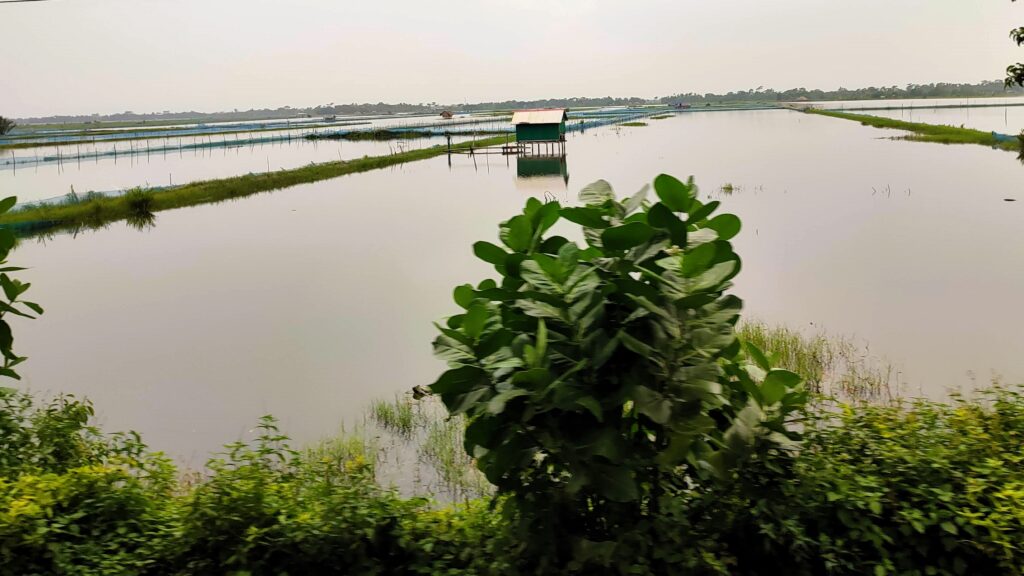The tiger is THE iconic species of the Indian Subcontinent. It used to inhabit almost the whole subcontinent from the deserts of Pakistan to the Himalayas, from the steppes of the Deccan Plateau to the tropical rainforests of South India. However, throughout the last centuries the tiger numbers decreased by an incredible (more than) 95% and they have lost over 90% of their habitat. Significant populations only survived in inaccessible forests where human land use and hunting were limited.
The tigers of the Sundarbans
One of these inaccessible refuge forests are the Sundarbans. The Sundarbans are the largest mangrove forest in the world located in the biggest river delta of the world, where the Ganges and Brahmaputra flow into the Bay of Bengal. They are an ever-changing mosaic of dense mangrove forests and tidal canals that crisscross the forest and make it impossible to move long distances without a boat. Around 200 Bengal Tigers, one of the biggest populations, live in this world of green forest and blue water. They are the perfect apex-predators in this landscape as they can swim well – unlike most large predators – and move swiftly even through dense forest.
We get an insight into this unique ecosystem, the threats for tigers and the life of local communities when we visit the ‘Sundarbans Museum and Interpretation Center’ of the Bangladeshi NGO WildTeam on the Bangladeshi side near the town of Mongla. We are on the very edge of the Sundarbans. In fact, from the center, we can already see the vast mangrove forests, Bangladesh’s last wilderness, just a few hundred meters away across the channel. On this side of the channel, we are surrounded by simple huts, rice fields and fish ponds. This picture portrays one of the issues the Sundarbans face. Bangladesh is one of the most densely populated countries in the world and right where the Sundarbans Reserved Forest ends, dense human population starts.
Who does the forest belong to?
And while it seems like nature and humans are clearly separated on first look, this is not the case in reality. Many locals make a living by fishing or collecting NTFP (non-timber forest products) inside the mangrove forests, so they regular roam into the realm of the tigers. The Sundarbans have hence developed into one of the poster children of the mystical ‘man-eater’ tigers as fatal attacks on humans here are far more common than in most other tiger habitats. The legend of the man-eaters of the Sundarbans is omnipresent here and has even made its way into Western media. We do not know the exact reasons why so many tigers here develop the habit of preying on humans, many factors like prey scarcity, the frequency of human encounters or the effort of hunting in this inaccessible territory might play a role. But we know that this is a huge issue for both humans and tigers.
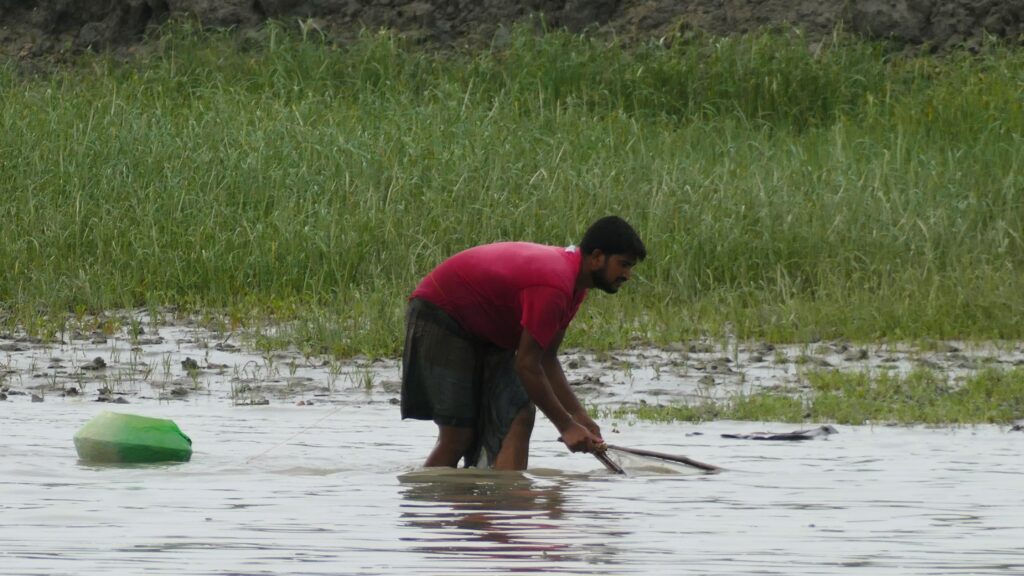
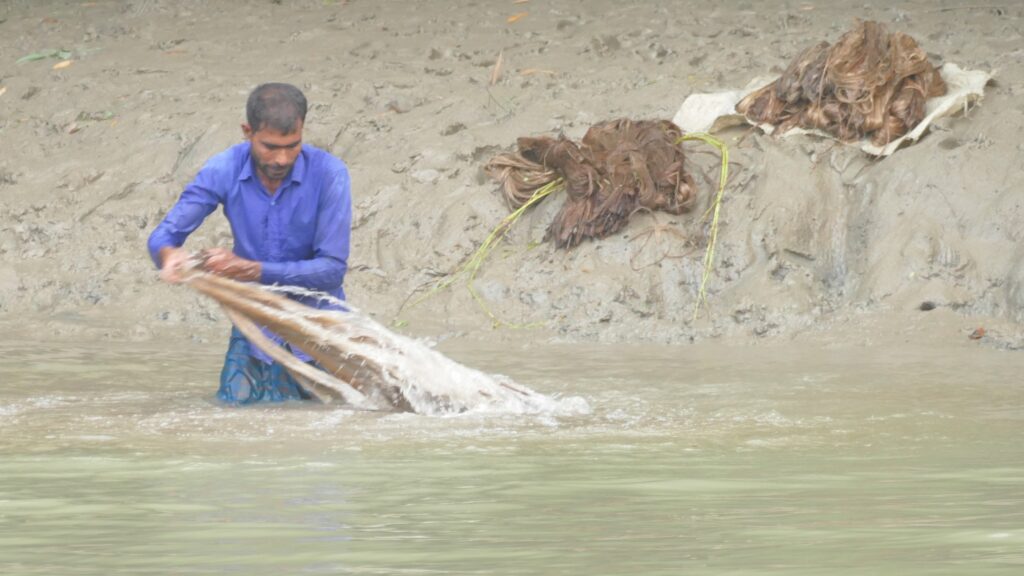
One main goal of WildTeam is to eliminate illegal activities in the Sundarbans, where most attacks on humans happen. Organized fishing and collection of NTFP in big groups is pretty safe, but going alone or in small groups to hide is especially dangerous. However, the Forest Department plans to keep tigers away from humans by fencing part of the forest to reduce tiger encounters, an intervention which was successful on the Indian side.
The Sundarbans are threatened from all sides
WildTeam’s first and foremost mission is to create a peaceful coexistence of humans and tigers in the Sundarbans, so that both as well as the whole ecosystem can thrive. However, this is easier said than done as the Sundarbans are facing many issues from different sides:
- The local population collects more natural resources than what’s sustainable. While some activities are legal, much is happening illegally, in secret. This includes deer hunting, wood collection and fishing, even with dangerous methods like using poison.
- The Sundarbans are isolated from any other natural areas as they are completely surrounded by densely populated land.
- International syndicates hunt tigers or hire locals to do it for them. The tiger parts are sold illegally in Bangladesh and across the globe.
- The alteration of the Ganges and Brahmaputra, two of the most important rivers in the Indian Subcontinent, changes hydrology and sedimentation leading to salination, erosion and land subsidence.
- Intense agriculture along the rivers washes fertilizers, pesticides, trash and toxins from over 500 million people into the delta.
- The climate crisis causes sea level rise and increases the likelihood of cyclones, which might completely submerge the Sundarbans within decades.
WildTeam fights for tigers and people
To protect the Sundarbans, WildTeam starts where all sustainable nature conservation should start: with the local communities. It specifically focuses on educating locals on how they can coexist with tigers while minimizing conflict. WildTeam has established the so-called Village Tiger Response Teams (VTRT) to enable villages to deal with tiger encounters by themselves and without violence. As livestock is plentiful in the villages around the mangrove forest, tigers regularly stray into fields and villages to hunt down a cow, buffalo or goat and drag them into the forest. Often, they are disturbed by humans while doing this, which led to regular fatal attacks and retaliatory killings of tigers in the past. But for the last 10 ten years, the VTRTs have successfully decreased both the number of dead people and tigers, as members of the VTRTs learnt how to safely shoo tigers out of the village and back into the forest.
”In the last five years, no person was killed by a tiger in the villages where WildTeam is active,” Dr. Anwarul Islam, CEO of WildTeam, explains with pride. The NGO covers around 80% of the 76 villages that are on the edge on the Sundarbans and has 450 active volunteers. For the youngsters, WildTeam established five education centers in schools and the Tiger Scout program, where the young generations learn about the Sundarbans, its benefits and what they can do to protect it. One example demonstrates how quickly this can make a change: One of the young Tiger Scouts used to regularly eat illegally killed deer meat at home. This is a big issue as deer are the main prey of tigers, but they are (illegally) hunted so much that there is barely enough left for the tigers, in return increasing the risk of tiger attacks on livestock and humans. After learning that, he informed his parents and refused to eat deer meat from there on, convincing them to stop eating deer as well.

Tigers and people grow together
The VTRTs have gained popularity across local communities and, as Dr. Anwar explains, involvement in these teams can even be an advantage in getting elected into community positions. Many volunteers even go above and beyond their duties and travel long ways to help with activities in other villages or inside the forest as well. All volunteers do this work without any kind of payment, which shows that they are in it for the cause and prevents any kind of nepotism and corruption.
“Earlier it was considered brave to kill a tiger, now it is considered brave to protect tigers.”
Dr. Anwarul Islam, CEO of WildTeam
The Sundarbans Museum and Interpretation Center is the next step in this effort. Currently still under construction, it will provide a space for workshops and other events and host a museum that educates locals and tourists about the Sundarbans as well as serving as a cyclone shelter. We got a little preview of the exhibition and were deeply impressed by the artwork that perfectly showcases the beauty and importance of the Sundarbans. WildTeam started awareness raising in this specifically emotional way in 2011, when it launched its campaign ‘Motherly Sundarbans’ emphasizing the emotional and traditional value of the Sundarbans for local communities. Dr. Anwar exemplifies WildTeam’s attitude by saying that “the center is the locals’ place, not WildTeam’s”.

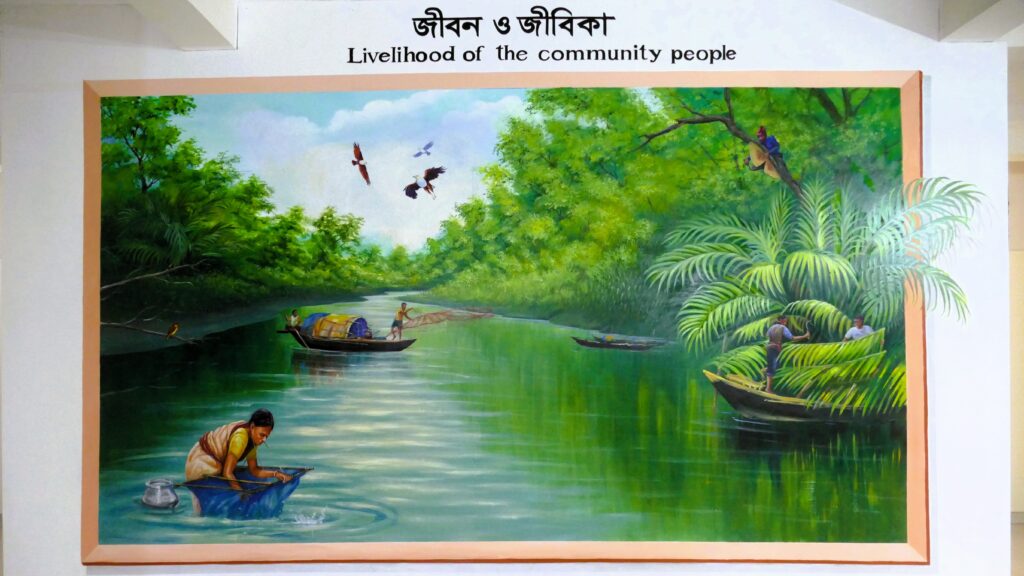
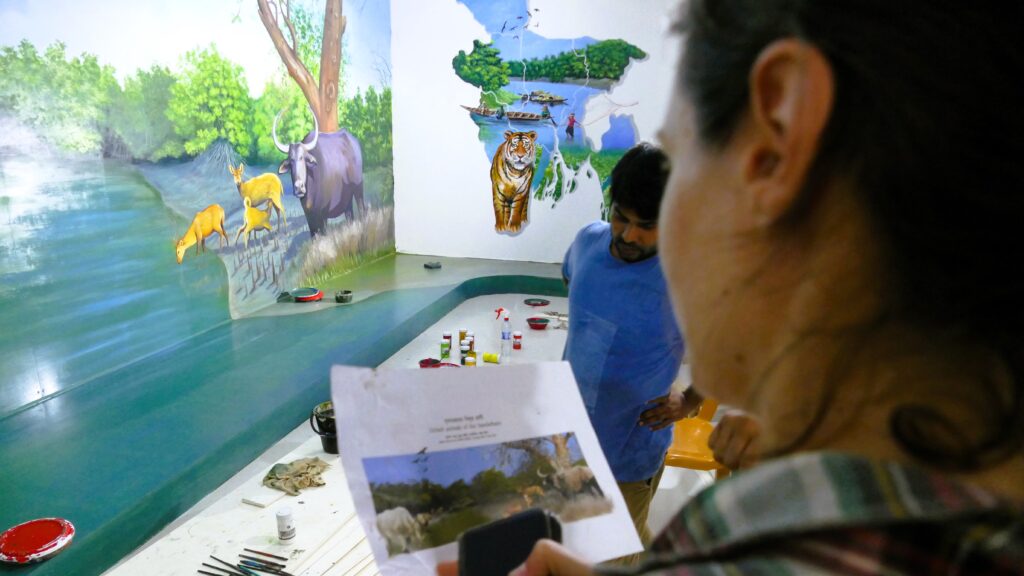
We need to know more about the Sundarbans
WildTeam also conducts and supports research in the Sundarbans. In fact, they conducted the first scientific tiger census in the Bangladeshi Sundarbans using camera traps and still support the responsible Forest Department during each tiger census with technology, expertise and volunteers. Dr. Anwar tells us that in the past, tiger censuses done by the Forest Department were based on pugmark counts by untrained volunteers and that numbers were not reliable. This explains the disparity between the 440 estimated tigers in 2004 and the scientifically counted 114 in 2018. Nevertheless, Dr. Anwar confirms that with effective protection, the Bangladeshi Sundarbans have the capacity to host 300-500 tigers.
This shows that WildTeam is leading the way for tiger protection in the Bangladeshi Sundarbans by helping local communities and supporting authorities where they can. The effects exceed their own work by pulling public organizations like the Forest Department with them and creating a role model for local communities. While illegal resource extraction is currently excessive and partly tolerated by the Forest Department, the situation is becoming better, demonstrated by rising deer and tiger populations. This could be boosted even more by a cooperation with the Indian side, where both the deer and tiger populations are supposedly getting close to the carrying capacity, sparking ideas among Indian conservationists to relocate them to the Bangladeshi side.
Protecting a national treasure
Apart from its activities in and around the Sundarbans, WildTeam also runs nationwide campaigns for awareness raising from its head offices in Dhaka. Over the years, the team has shown a lot of creativity when it comes to innovative communication and campaigns. In 2012 they organized a rickshaw challenge, where 20 challengers rode 400km along the Bangladeshi coast towards the Sundarbans. And in 2016, the TigerCaravan, a bus dressed up a tiger, travelled across Bangladesh to raise awareness for the tiger.
While this might seem like WildTeam only cares about tigers and nothing else, quite the opposite is true. When it started as the ‘Wildlife Trust of Bangladesh’ in 2003, it tried to cover all kinds of species and habitats. But the members eventually had to realize that they cannot do it all, especially in a poor country like Bangladesh, where they rely on attracting foreign funding. As aforementioned, the tiger is the most iconic species of the whole subcontinent and also revered in Bangladesh, where it is the country’s national animal, as well as the symbol of the Liberation Army and the national cricket team. It is also an umbrella species, whose protection implies the further safeguarding of large connected natural areas and its prey species.
‘You can build the Taj Mahal, but you can never build the Sundarbans.’
Visiting the Sundarbans and seeing this world of forests and water has left a lasting impression on us. To imagine that the waters of the mighty Himalayas as well the endless plains of the Ganges, both of which we visited months before, all end up here and meet the sea, is simply stunning. Streams that can be hundreds of meters wide divide mangrove islands accessible only by boat. Sometimes the boundaries between fields, ponds, paddies, roads, forest, mud, river and sea seem to disappear.
This is not only a special place for us, but for many Bangladeshis. As Dr. Anwar explains, the Sundarbans are the only real tourist attraction of Bangladesh as well as its last Wilderness and the only remaining tiger habitat, making it a very special place for the whole nation. Its protection thus must have uppermost priority, because in Dr. Anwar’s words “you can build the Taj Mahal, but you can never build the Sundarbans.”

